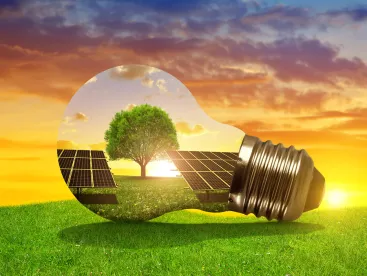Since the enactment of Law No. 57-07 on incentives for the development of renewable sources of energy on May 2007 (“Law No. 57-07”), the Dominican Republic has experienced a significant surge of investments in the renewable energy sector. For example, from 2011 to 2016, the country’s National Interconnected Electric System (“SENI”) added1,018 megawatts (“MW”) of new installed generation capacity, 19% of which came from renewable energy sources.[1] Moreover, the Minister of Energy and Mining recently indicated that the SENI generates approximately 800 MW of power exclusively from non-conventional energy sources such as from hydropower, wind power, solar-photovoltaic power, and biomass.[2]
It is important for potential investors to determine which power-related investments fall within the scope of Law No. 57-07 and which incentives apply to such investments. Pursuant to the law, all public, private, mixed, corporate and/or cooperative power or bio-fuel production projects can benefit from the incentives if they fall under one or more of the following categories:
-
Wind farms or isolated wind turbine projects that do not exceed an initial output of 50 MW
-
Solar photovoltaic systems
-
Concentrated solar power project that do not exceed an output of 120 MW
-
Power plants that generate at least 60% of their energy from plant-derived biomass and that do not exceed an output of 80 MW
-
Bio-fuel production plants
-
Farming, agricultural or agro-industrial infrastructures solely focused on the production of biomass for power-generation purposes
-
Marine power energy projects
-
Micro or small hydropower plants that do not exceed an output of 5 MW
The incentives under Law No. 57-07 include, but are not limited to[3]*:
-
100% exemption from the importation taxes on equipment, machinery, and accessories required for the generation of power from renewable energy sources
-
100% exemption from sales tax of the equipment, machinery, and accessories required for the generation of power from renewable energy sources
-
100% exemption from income taxes until 2020
-
5% tax relief for interest on loans for the development of projects pursuant to Law No. 57-07
Through Law No. 57-07, the Dominican Republic seeks to reduce environmental pollution and to procure a stable supply of electricity. This is all in line with the country’s plan to support power projects from renewable energy sources, which was launched on April 2017 and, according to government officials, will promote an initial investment of US$ 779.8 million from 2018 onward – for a total of 361.2 MW of power to be generated from renewable energy sources.
1. La Mayor Inversión En Nueva Generación Eléctrica En El Mundo Es En Renovables, ElDinero, 24 Aug. 2017.
2. Specifically, 600 MW from hydropower, 135 MW from wind power, 30 MW from solar-photovoltaic power, and 30 MW from biomass. See República Dominicana Apuesta Por Energías Renovables En Lucha Contra La Desigualdad, ElDinero, 10 Aug. 2017.
3. Chapter III of Law No. 57-07 includes more detail on the above listed incentives. Incentives under the law should be analyzed on a case-to-case basis. See also: El Futuro Del Sector Eléctrico En La República Dominicana., The Economist Intelligence Unit, 2015; The Dominican National Energy Commission’s website and interactive map; and Dominican Tax Code.
Article written by Josue Marti.



 />i
/>i

